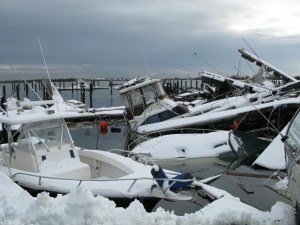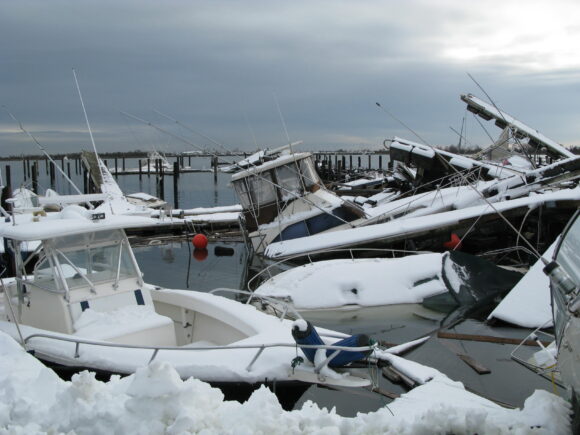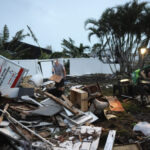In Hurricane Sandy’s aftermath, more than 1,500 vessels were thrown onto land and across the waterways of New Jersey, and 90 percent of them were reunited with their owners with the help of State Police.
But 249 vessels and vehicles had to be recovered through the state’s $1.3 million Waterway Debris Cleanup Project.
The cleanup saw nine of those vessels recovered in very poor condition; they were sent directly to disposal.

New Jersey hired contractors to retrieve and store the boats after they had been ripped from their docks and washed away in the October 2012 storm surge. In the days after the storm, boats littered area roadways along the shore, were thrown under bridges and into marshes. One month after the storm, about a dozen boats were removed from the Edwin B. Forysthe Wildlife Refuge, where about 130 vessels were tossed, ranging from Galloway Township, Atlantic County, to Brick Township in Ocean County, said refuge Manager Virginia Rettig.
The state anticipates 90 percent of the cleanup and recovery costs will be eligible for reimbursements from the Federal Emergency Management Agency, DEP Spokesman Bob Considine told The Press of Atlantic City.
The coastal areas of the state that were largely affected and saw displaced vessels were divided into three regions; Region 1, from the top of Bergen County to the Navesink River; Region 2, from the Navesink River to Route 72 in Ocean County; and Region 3, which extended from Route 72 to the Delaware Memorial Bridge in Salem County.
The majority of the vessels were recovered in Region 2 that extended from the Navesink River to Route 72 in Ocean County, according to data from the state Department of Environmental Protection.
Recovered vessels were stored in state storage yards, said Trooper Jeff Flynn, spokesman for the New Jersey State Police.
After impounding the vessels for months, the DEP worked with other state agencies, including the State Police, to contact the boat owners so that they could claim their property, Considine said.
The state Motor Vehicle Commission sent additional correspondence to owners of the vessels stating that their property would be taken by the state, disposed of or auctioned if not collected and recovery costs were not paid.
Twelve impounded vessels were claimed by their owners and the state received $49,194 in recovery costs, Considine said. The state auctioned 36 vessels, resulting in $36,364 in sales and a net of $20,969.
Was this article valuable?
Here are more articles you may enjoy.


 Here Comes Another Busy Atlantic Hurricane Season, But Will It Be as Crazy as 2024?
Here Comes Another Busy Atlantic Hurricane Season, But Will It Be as Crazy as 2024?  Hackers Abuse Modified Salesforce App for Data Theft and Extortion, Google Says
Hackers Abuse Modified Salesforce App for Data Theft and Extortion, Google Says  Highways Baking at 158F Signal a Red-Hot Summer From China to US
Highways Baking at 158F Signal a Red-Hot Summer From China to US  Cars Are Getting Smarter. Why It Matters for Claims Professionals
Cars Are Getting Smarter. Why It Matters for Claims Professionals 